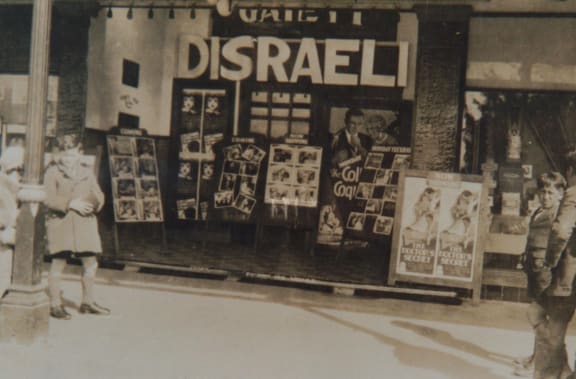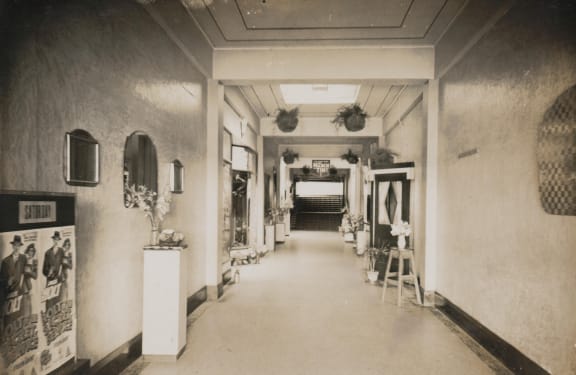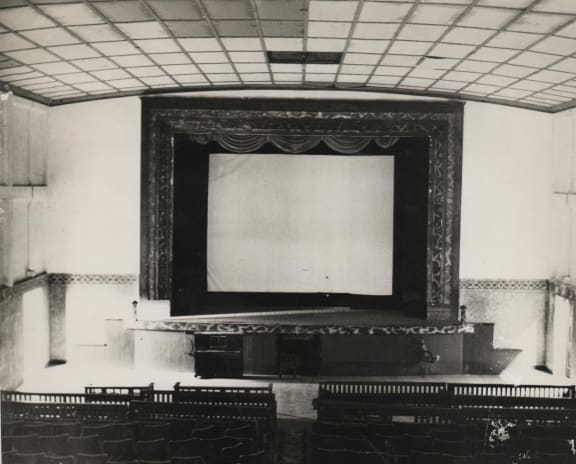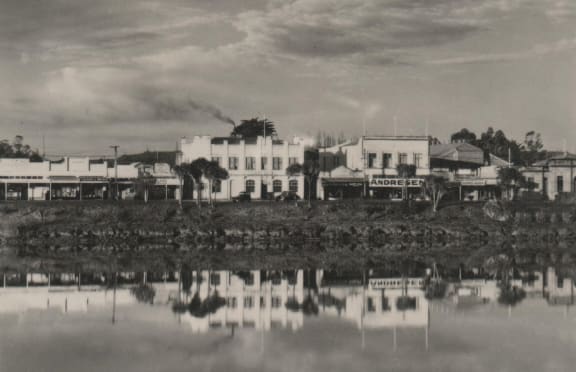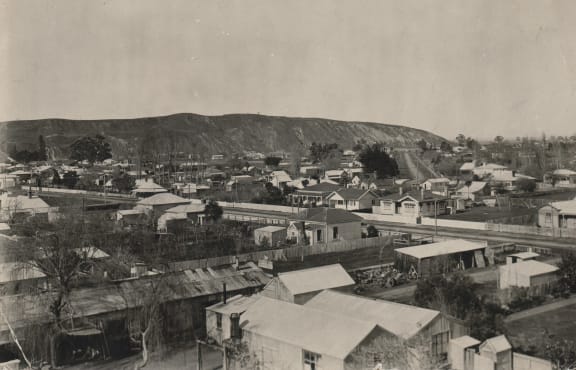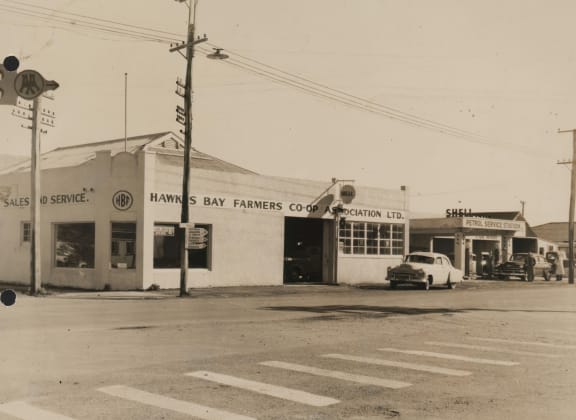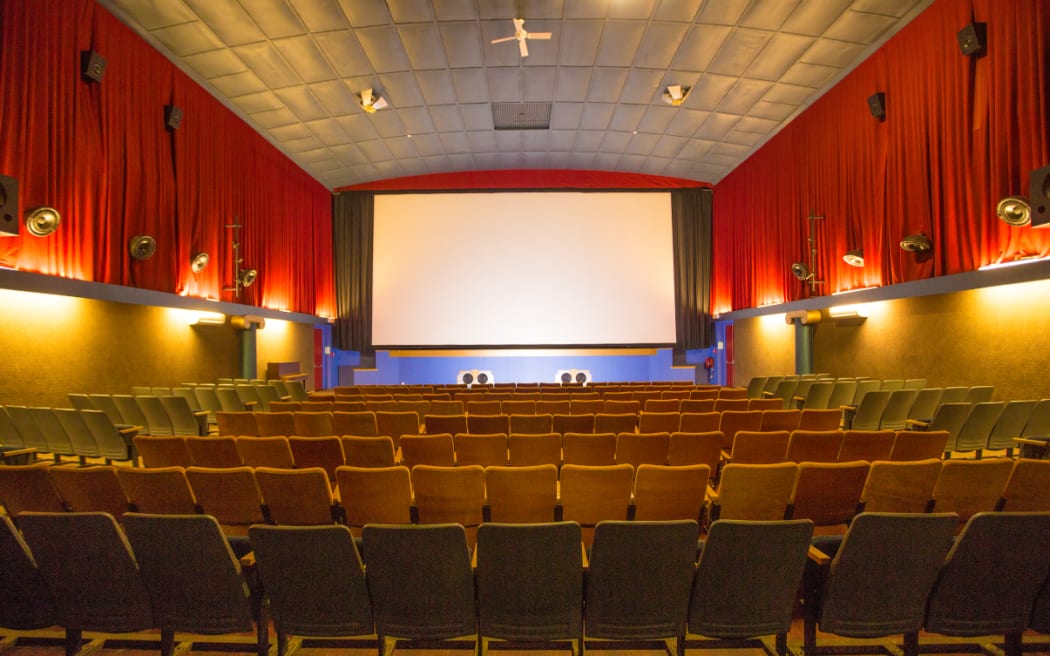
Interior of Wairoa's Gaiety Theatre today Photo: Google Maps
Writer John Bluck shares a very personal perspective on how moviegoing in New Zealand reflects our character, history and preoccupations.
A Tikiti to the Pikitea
Episode 1: The Dream Factory
What did everyone do to find their fantasy before films came along, only just a hundred years or so ago?
And each film is a magic journey, as if for the first time. When the house lights go down in the cinema, when those infuriating people in front of you finally turn off their cellphones, and the screen edges slide out to full-size, you know you’re about to be taken to a place you’ve never been before.
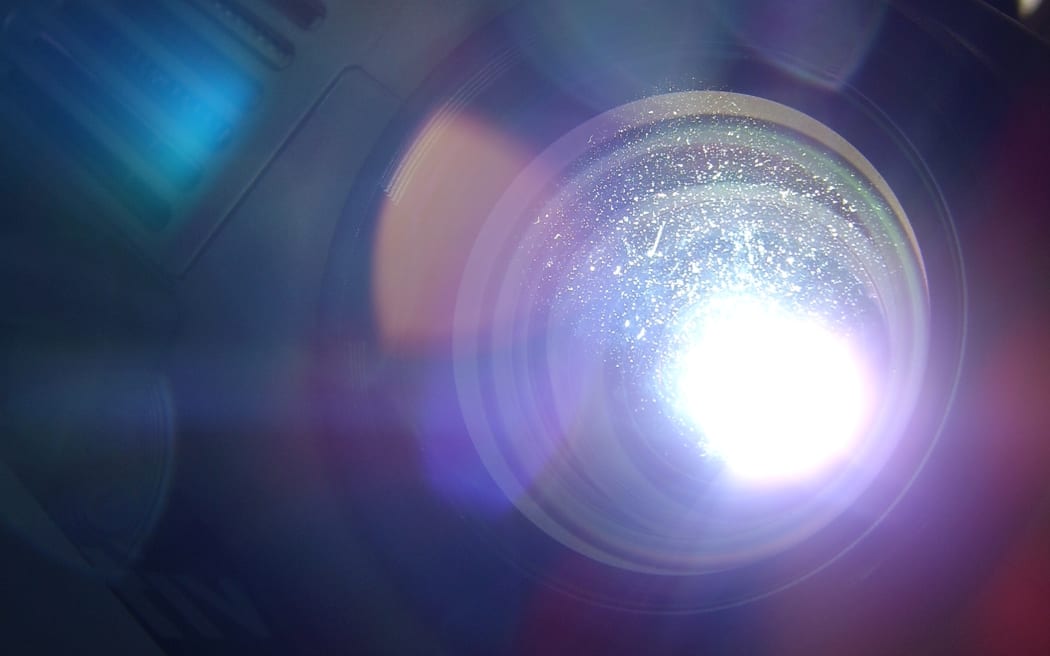
Photo: Flickr / Friedemann
It’s all trickery of course. An illusion mechanically and electronically fabricated from projecting film but now videotape and digital signals through a process I can’t begin to understand, creating images that move and speak like we do, even though they are twice, three times our size.
And so we sit there in the darkness, inside the dream factory, close together but not touching, in a crowd that doesn’t talk or move for an hour or two; sometimes laughing out loud, sometimes weeping quietly (though it’s bad form for men to look at each other when we do), and finally emerging silently, as different people, sometimes left bewildered by what we’ve seen.
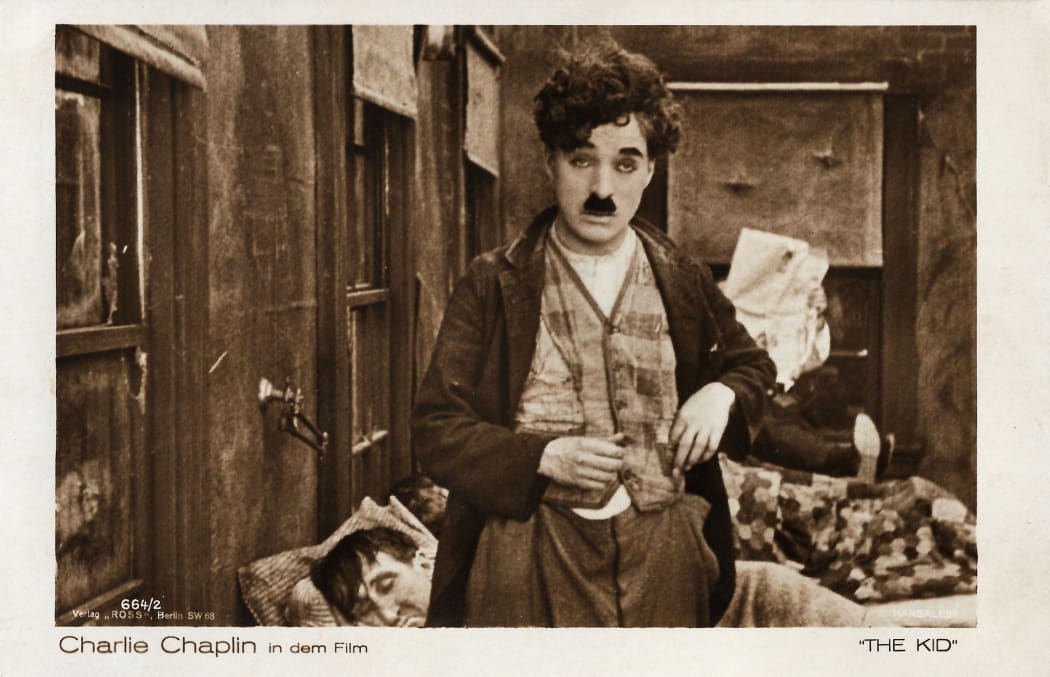
Postcard of Charlie Chaplin's film The Kid Photo: Flickr / Truus Bob & Jan too
The movie industry’s first mass audiences were found in the industrial cities of Europe and America at the start of the 20th century. Silent films, shown in nickelodeons to poor migrant workers who had limited grasp of the language and couldn’t read the subtitles. But the movies worked their magic regardless, giving a brief escape from the drudgery of factory life.
Our forebears in New Zealand started just as early. My grandfather ran a picture theatre during the First World War. I’ve still got the advertising slide shown at halftime. Bluck’s Pioneer Picture Show. In Front All The Time. Watch Out for the Hunchback of Notre Dame.
Sadly the theatre burnt down and the films lying around were destroyed. I remember the charred remains that sat in his garage for years.
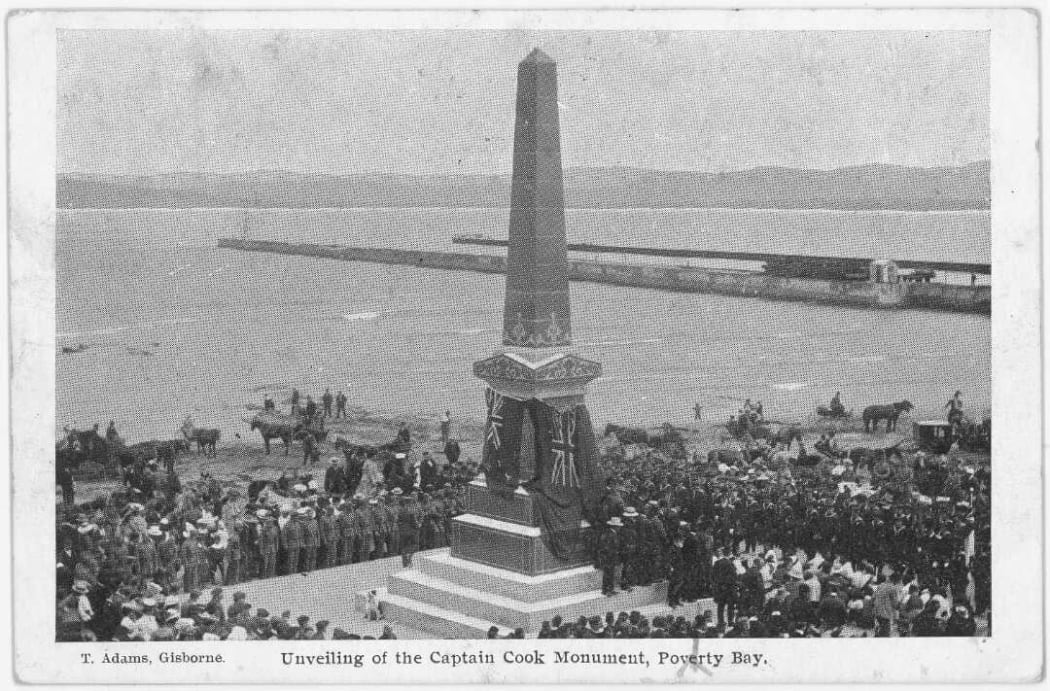
A postcard of the 1906 unveiling of the Captain Cook monument, Kaiti, Gisborne Photo: Alexander Turnbull Library
One was a film about Captain Cook, locally made as were many productions that celebrated Kiwi life and times. It might even have been a copy of the 1906 re-enactment of Cook’s landing in Gisborne.
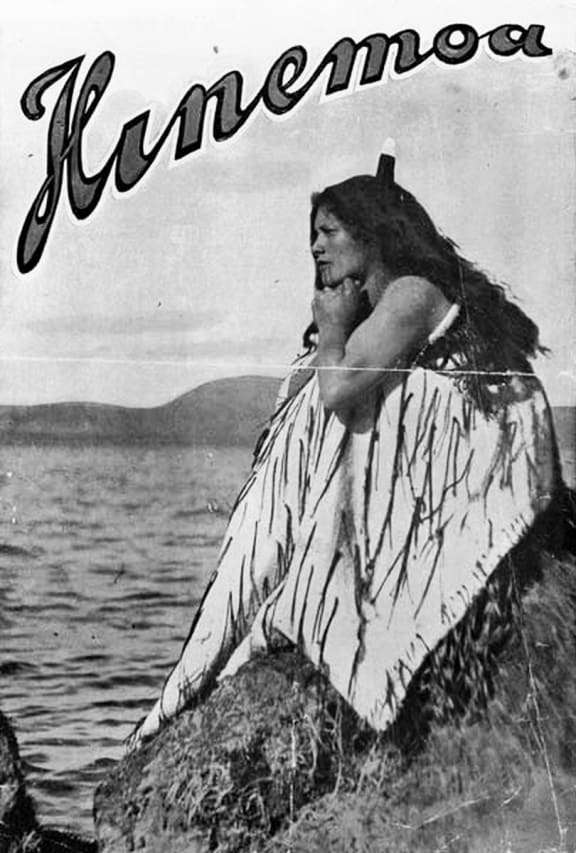
Hinemoa was the first feature film made in New Zealand. Filmed in just eight days on a shoestring budget, it was directed by George Tarr and starred Hera Tawhai Rogers as Hinemoa. Photo: Te Ara
One of the earliest, made in 1900, is entitled The Departure of the Second Contingent for the Boer War.
Films about Māori were especially popular. Like the 1901 production Māori Canoe Race at Ngaruawahia. Many have been lost forever, like George Tarr's Hinemoa, the first feature film to be made by a New Zealander.
Movie-going is woven into the DNA of New Zealand life.
And unlike many other forms of our art and culture framed by European themes, the Māori story was central to our cinema right from the start.
The title of this series honours that bicultural legacy. There was a Māori word for the pictures (pikitia) long before there was one for a computer or cell phone.
We’ve always been a movie-going people. By 1913 Wellington only had a population of 70,000, yet there were five cinemas in the city.
By the 1940s we were second only to the USA in attendance ratings, and by 1953, ahead of them, until TV knocked those figures back.
Gordon Miram writing back in 1945, declared “If a post-mortem is performed on us, I think they will find three words written on New Zealand’s heart: Anzac, Hollywood, and Home. Only a rash prophet would venture to suggest which will be carved the deepest.”
So the dream factory has been hard at work in our history for a century and more, long enough to be generational in its influence.
I used to wonder why my family opted to work in the film industry until I counted up the ways the movies impacted my life, starting from my grandfather’s theatre, then my father’s story of going to the Civic in Auckland in the 1930s and marvelling at the stars in the ceiling, then my own eagerly awaited visits to the LDS Theatre in Nuhaka, with a hot pie at half time, then Saturday night 16-millimetre showings at boarding school in Napier, sitting on the common room floor, because the seniors took up all the chairs.
I remember when the housemaster Alan Howlett managed to get hold of a cinemascope lens for the school projector and all our teenage lives were enlarged overnight.
And later again, as a homesick and hard-up overseas student studying in Boston, relishing the luxury of a double feature show in Harvard Square, watching actors who were old familiar friends from the screens back home.
Once you’ve been touched by the magic of the movies, it never dispels. And I’m sure it was as intense for those who watched silent films as it is for the Imax and 3D audiences today. As then, so now, we expect to be carried away and out of ourselves for a couple of hours.
The names of the cinemas acknowledge that – invariably exotic and romantic. You’ve never been to a movie theatre with a business-as-usual, corner-store kind of name. they’re called The Royal or The Mayfair, New Orpheus, Lido, Hollywood, the Regent, or something grand like The State or His Majesty’s. Names that invite you to leave the ordinary and the everyday behind.
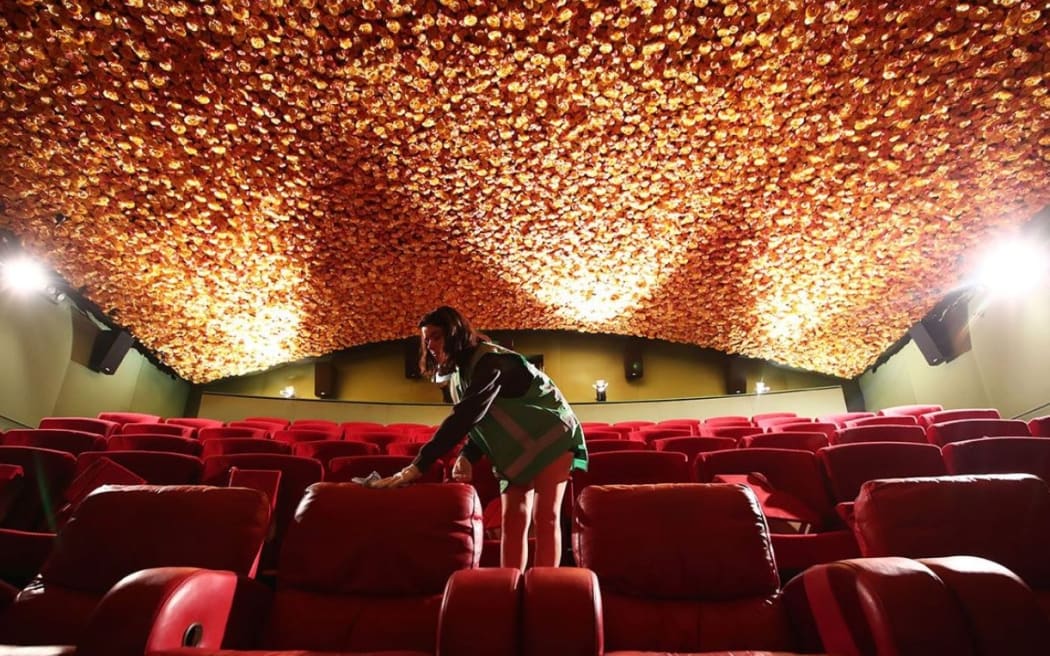
The floral ceiling at Matakana Cinemas Photo: Facebook
And the décor matches the dream – art deco or nouveau, byzantine. In Matakana, the cinema ceiling is an exuberant upside-down garden of paper flowers.
We know the experience is all artificial, but we happily join the game of pretending and go along for the ride. We know this is a factory that delivers dreams, not real things, but governments aren’t so sure. From the beginning, they have been leery of the power of the movies and sought to censor what we’re allowed to see.
Authoritarian regimes still control what’s shown, so Hollywood blockbusters with an eye on the China market have to leave out gay kissing couples and the wrong sorts of cell phone. Pandas help sales, so do patriotic and well-armed heroes.
New Zealand cinema has never been as nationalistic as its poetry, paintings or novels but it has been used to promote patriotism and empire loyalty. Some of us still remember having to stand for God Save the Queen before every film, and watch Her Majesty ride a big old horse at the Trooping of the Colour. To sit through that (for the audience, not the Queen) was a treasonous act.
And our homegrown movies have always been proud to show off our landscape and celebrate, equally romantically, our twin cultures Māori and Pakeha. It took us a long time to use the movies to show the darker side of New Zealand life. Romance was the favourite mode, and that required as the old carpet ad put it, to tread softly for you tread on my dreams.
Movies have been part of who we are, shaping our dreams and feeding our fears for as anyone now living can remember. We’ve been watching them in New Zealand for almost as long as we’ve been farming sheep.
Episode 2. The shared experience
If you went to the movies in Wairoa on a Saturday night in the 1950s, particularly if you had a regular booking in the dress circle, you needed to tidy yourself up. The manager George Curtis, in suit and tie to greet you in the foyer, reminded you there are standards to be met.
Movie-going, more so than now, was something you did together, with family but preferably with friends, and especially a special friend. The back row of the movies was a place where you could kiss and cuddle and the theatres that didn’t bother to keep an eye on that behaviour escalating became known as passion pits.
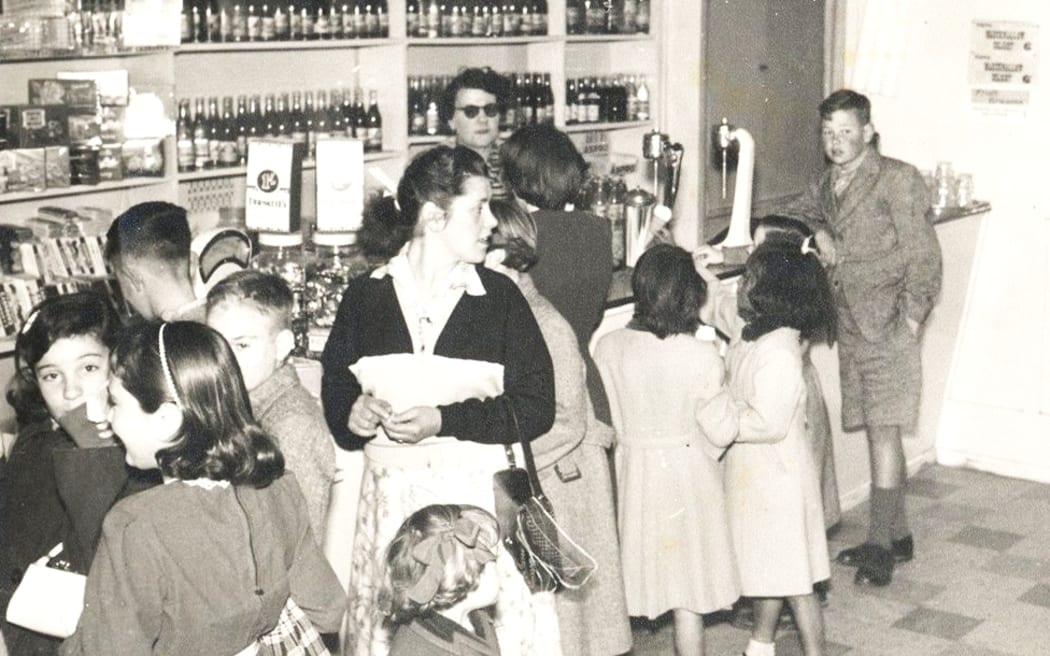
Regent Theatre Tuck Shop, Levin. Photo: Horowhenua Historical Society
My first date involved going to the movies. Parents saw it as a safe enough outing, provided the details of how and when you got home afterwards were well nailed down.
But whatever you did with your friends at the movies, it was an occasion to plan ahead and dress carefully for.
The anticipation sometimes exceeded the actual event, but regardless of the quality of the film, it was always an experience in building community across lines of culture, gender, class and age. We weren’t always good at mixing those divisions in wider society, especially as Māori and Pakeha, but we did so happily enough at the movies, gathered in the darkness, watching people say and do things on the screen that we’d never dare to do in the daylight.
The community formed in these audiences was much more inclusive than anything you’d find at the pub or the rugby match.
And we took it all very seriously; fantasy and romance though it mostly was because those were qualities in short supply in post-war New Zealand. We were an earnest lot, which might be hard to believe now, as we start to lighten up and enjoy our complications as a multicultural nation.
The authorities back then had little patience with filmmakers who didn't respect the conventions of cinema decency. I remember visiting Internal Affairs Minister Alan Highet in the early 70s as part of a delegation from the NZ Film Societies, asking him to reconsider banning Mike Nichol’s movie Carnal Knowledge because it used the f.. word. We were treated as if we’d asked for a licence in decadence and debauchery.
And I recall my own righteous indignation when Peter Jackson and Costa Botes film Forgotten Silver screened on national TV, purporting to be the true story of a pioneer film-maker discovering ancient ruins on the West Coast. The country was agog until the hoax was admitted to a day or two later, with thousands of angry viewers who couldn’t believe they’d been duped so easily.
There is an unspoken covenant between filmmaker and audience. We don’t mind being provoked and tantalised, we’ll go along with the feints and sleights of hand that we expect from a good magician. But we can’t stand being lied to. We love movies that expose fraudsters but woe betide a filmmaker who sets out to deceive us.
We value what we see together on the big screen, even more than the small screen, tainted as it by too many bad reality and quiz shows. The TV wasteland is much more vast than any rubbish the movie world has created.
In what we shared as movie audiences, something special happened to us together. I have a friend who remembers every movie we’ve seen together, going back 30 years. He can recall what we said to each other afterwards, along with what we ate at half time. Because in every collective engagement with a film, something unique happens to us that leaves us not quite the same as we were before.
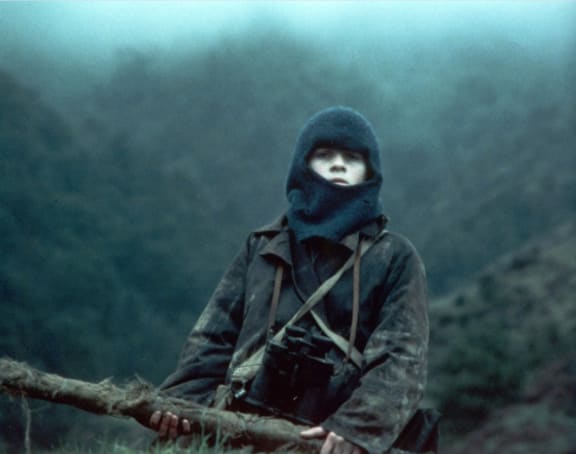
A screenshot from the movie Vigil Photo: Vincent Ward Films
Filmmaker Vincent Ward puts it like this: “The greatest magic for me is when you know an audience is connecting with a film and something new is created by that interaction. So I put out something, they receive something, and in that space between, that is where the magic is, and you can feel that moment when you can hear a pin drop. And then that hush at the end.”
Ward’s own films are full of such moments, Vigil most memorably, the story of eleven-year-old Toss losing her father and finding a stranger in his place on a remote farm in North Taranaki. We share her coming of age through elemental, haunting, overwhelming images that once shared will never let you go.
The audience at Cannes knew that when they stood to applaud Vigil, the first NZ production to enter into competition at that famous festival. Rather more modestly, I used that film in a seminar at Knox Hall in Dunedin and I can still describe the classroom we saw it in and the students I saw it with.
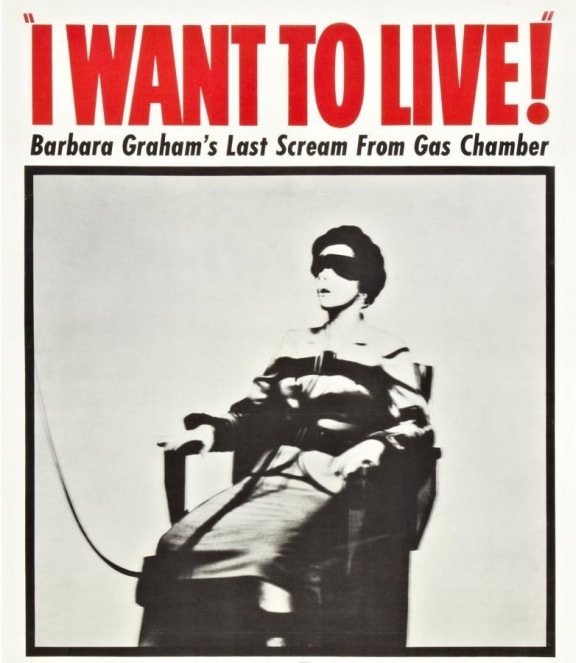
I Want to Live! poster Photo: United Artists
Just as I can describe the Murchison Theatre where, as a nine-year-old, I saw the wildly unsuitable death row drama I Want to Live!, starring Susan Hayward, and the unsuspecting relatives I saw it with.
My aunt and uncle went to the movies there on Saturday night regardless of what was showing, provided the Newmans service car delivered the cans of film on time, because that’s what people did together, rain or shine, and if it was cold they’d take a rug and a hot water bottle.
So connected was the movie to the audience in Murchison that a buzzer was attached to the back row of seats. One press meant the sound was too high, two presses meant too low and three meant there was something wrong with the projection.
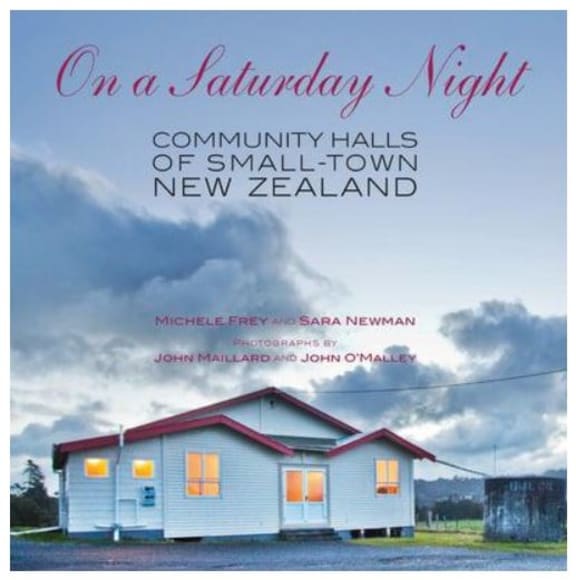
Photo: University of Canterbury Press
Michelle Frey and Sara Newman have written a lovely book called On a Saturday Night about community halls in small-town New Zealand where they describe the way not only concerts, dances, and meetings but also movies welded small settlements together.
The kids sat on forms in the front, counting down the numbers at the start of the film, shouting “Contact!” when the actors kissed on screen, and going home to imitate the forts and firearms they saw on Hopalong Cassidy and the Lone Ranger serials.
Movie-going is as much a Kiwi ritual as gathering pipis on a beach.
And the impact it’s had on our lives, on who we think we are and how we see the rest of the world, is profound. The bank of memories that a lifetime of movies accumulates shapes who we are in ways we don’t even think about.
And it all comes from what we have done together in the dark, not like Taika Waititi’s vampires but ordinary people like us, taking time out to watch things being done and said onscreen that would never happen at home.
Episode 3. A mirror to ourselves
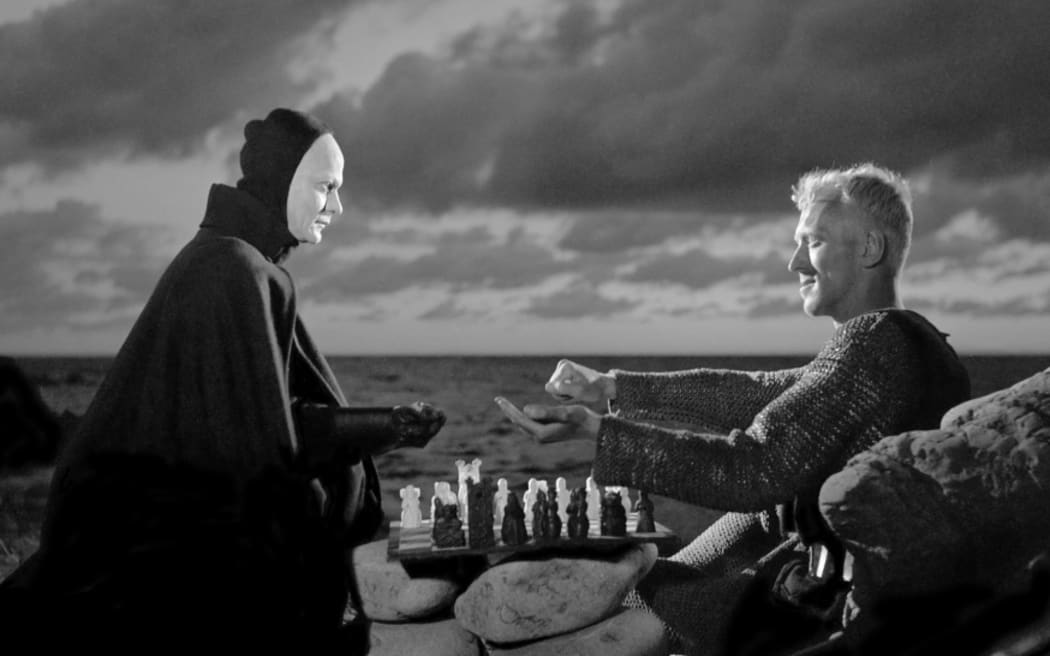
A shot from Ingmar Bergman's film The Seventh Seal Photo: Svensk Filmindustri
Mirror, mirror on the screen
What’s the loveliest we’ve been?
We love to look for ourselves in the movies and find people like us, preferably a little braver, and better looking, living lives a little more exciting than our own.
But for New Zealand audiences, it took a while. In the absence of a viable local film industry, we preferred to watch British and American actors and stories, with the odd entry from Australia or Scandinavia. People who watched Ingmar Bergman movies in my student days were deemed to be artier and smarter.
Movie marketer Lindsay Shelton believes that in the 1950s we didn’t think of New Zealand as having any stories worth telling or places worth knowing.
The illustrated history of NZ film records how audiences felt awkward and embarrassed at seeing and hearing themselves on screen, or radio for that matter, which is why our national broadcasters affected BBC accents. Even as late as 1992, producers of Shortland St were nervous that too many Kiwi accents wouldn’t be acceptable to viewers.
I don’t remember any embarrassment when I went to see the locally-filmed Broken Barrier with my father in the Opoutama Hall in 1953. Up there in black and white on the big screen were the beaches down the road, the people – Māori and Pakeha – I grew up with, even the bus I’d ridden many times. John O’Shea’s bicultural love story broke all sorts of taboos, but best of all it shocked me into realising our faces and our stories were the match of any internationally.
What I didn’t know at the time was that O’Shea had been doing that homegrown work for years, underfunded and poorly marketed though it was. His little-known community comedies included A Takapuna Scandal, Hamilton’s Hectic Husbands and A Daughter of Dunedin which presented the city as a “very progressive little town, always forward in going backward.”
It wasn’t until the 70s and 80s that New Zealand films found the confidence to show us as we are, however provincial, and we began to enjoy what we saw in the mirror.

Screenshot from This is New Zealand Photo: NZ On Screen
This is New Zealand, a multi-screen production by the National Film Unit made in 1970 for the Osaka Expo was viewed by over two million people. And the unit’s documentary, Gone Up North for a While exposed a repressive culture hiding young women “getting into trouble,” as it was put so quaintly at the time.
Barry Barclay’s epic Tangata Whenua series on TV was a game-changer, as was his later film Ngati, viewing the Māori world through Māori eyes.
And even bigger hits followed, notably Waititi’s Boy and Caro’s Whale Rider, but they were not enough to convince director Merata Mita that the NZ film industry was anything other than “a white neurotic one… presenting men and women at odds with their country and themselves”. Even through Pakeha eyes like Sam Neill’s, the industry was portrayed as a “cinema of unease” showing a culture of anxiety. A dark and brooding place.
But there are as many exceptions as there are agreements to these broad-brush descriptions.
Geoff Murphy’s Goodbye Pork Pie, Smash Palace, Harry Sinclair’s Topless Women Talk About Their Lives and The Price of Milk (a man, a woman and 117 cows), and to cap it all, Peter Jackson’s forays into tongue-in-cheek horror and epic fantasy – all this makes it hard to generalise at all about Kiwi cinema. And what Taiki Waititi shows us is brewing in the shadows is very different from the dark and brooding places that Sam Neill described.
There’s a subtlety now in what we see on our screens. A delight in playing with tonal quality and ambiguity, irony, and above all an ability to laugh at ourselves. It took off in the early 80s with films like John Reid’s Carry Me Back, based on a Joy Cowley story, about two brothers having to get their suddenly dead father back to Marlborough from Ranfurly Shield game in Wellington. “Dad’s dead weight and they’re dead tired. But they’ll both be dead broke unless they can carry him back.”
Then there was Billy T James and Came A Hot Friday, Ian Mune’s The End of the Golden Weather, Chris Graham’s Sione’s Wedding, Taika Waititi’s Hunt for the Wilderpeople all displaying a wry and self-deprecating touch to showing ourselves to the world, well-established now over a quarter of a century of local cinema.
It’s bicultural and multicultural, and it increasingly relies on women directors, producers, actors and writers, like Jane Campion and Gaylene Preston who steer movies towards a new honesty.
Look at Waru if you’re not sure about that, made by a collective of Māori women directors, about child abuse – it takes a village to raise, and to kill a child.
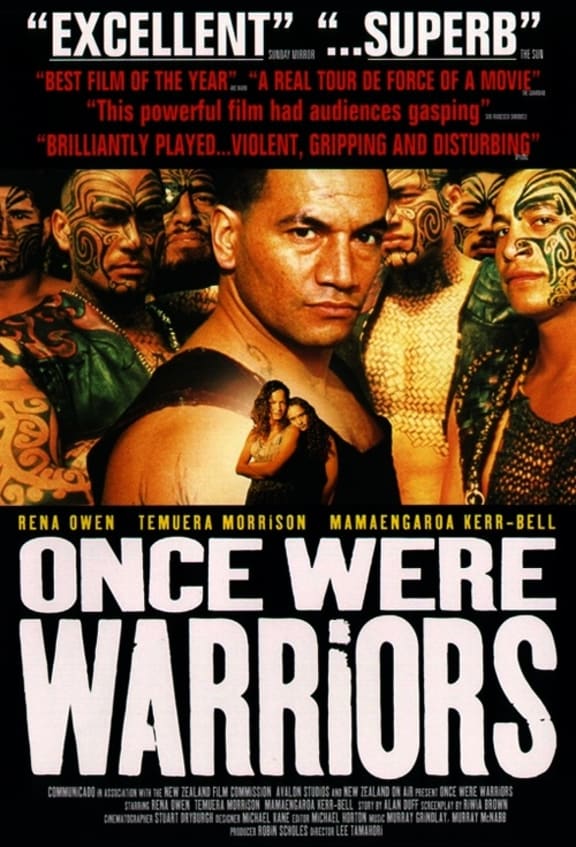
Photo: Flicks
And it was a woman producer Robin Scholes who brought us Lee Tamahori’s Once Were Warriors back in 1994, which though hugely controversial and accused of reaffirming prejudice and damaging Māori self-esteem, put domestic violence into the centre of our national consciousness.
Emiel Marten’s book on the fallout from that movie records that women would turn up at refuges after seeing the film saying, “I’ve got a Warriors’ problem.”
Dr Max Abbot, then director of the Mental Health Foundation, said: “the film reopened the debate... and enabled ordinary people to face this problem in their lives.”
This is what cinema can do for us, start us talking in the daylight about the things we have to face in the dark, to start us seeing ourselves as we really are.
We are getting better at coping with honest reflections of ourselves on screen. But the way we see ourselves is never some purely Kiwi way.
Like the elusive Kiwi novel, the Kiwi film is always a hybrid creature, cross-bred all over from Hollywood to Ealing Studios.
Sleeping Dogs owed a lot to Butch Cassidy and the Sundance Kid, Goodbye Pork Pie to Bonnie and Clyde.
Tamahori drew on everything from gangster and gang movies to hip hop, rap and African-American pop culture when he brought Warrior Jake the Muss to life in Rotorua.
The beauty of film is that it’s a global art form, weaving together themes and styles, technologies and visual fashions from around the world. All the filmmakers I know soak themselves in their medium. They watch the movies of their colleagues, sometimes over and over, trying to distil the mystery of what makes each work distinctive.
Actors, set designers, cinematographers, screenwriters and directors are constantly referencing someone else’s way of doing it, and that someone else may well be from Los Angeles, Mumbai or Prague. Movies are the most derivative of art forms, and the most original. They might be rooted in local soil, but they’ve been fed and watered internationally. And as we watch them, we get caught up in that wider world and a little bit of that O.E. rubs off on us, even without leaving home.
Episode 4. Film as a mirror of where we are
There is a major player in every movie that is never listed in the credits, every bit as powerful as the leading lady or man. It dominates without saying a word and shapes the story every bit as much as the twists and turns of the plot.
'Landscape' is the word for it and filmmakers seek them out with the same care as they cast a character or edit the dialogue. They know that if the setting doesn’t resonate with what’s going on in the story and add commentary of its own, the film will never fly.
Because landscapes – the physical setting of the story, natural or built as town planners call them, do speak.
And in New Zealand movies, they shout aloud, especially the natural settings. You can’t imagine a film like Vigil without the gaunt hills of north Taranaki, or Feneley’s haunting film called Stray without the ranges of Central Otago, or the Aramoana sky in Out of the Blue or to cite a built landscape, the wrecker’s car yard of Smash Palace, all 15 acres of it in Horopito.
Landscapes have a voice of their own, and New Zealand film from its earliest days has exploited what they have to say to the world. Our Tourism Department as early as 1907 was churning out travel films showing Ngauruhoe erupting and Rotorua’s Thermal Wonderland bubbling and gurgling away.
That tradition of letting the landscape speak has survived and thrived. Peter Jackson has turned it into a mega art form, colouring and filtering south island mountains and valleys as the setting for primordial battles between fairytale creatures. You don’t know where the hobbits live after seeing the movies, but tourists by the million have been tracking them down ever since. Matamata has never had it so good.
Big budget movies made here from overseas tend not to be too precise about which landscape is used. You would never know that Tom Cruise hung out of a helicopter over Queenstown in Mission Impossible 6 because it didn’t matter for that storyline, even though it matters a great deal to ours.
Landscapes too easily become blended backdrops that could belong anywhere, which doesn’t help our landscapes speak for themselves in a way that are special to their location and history.
In an essay in The Journey Through NZ film, Gaylene Preston writes that the job of the filmmaker is to make “an already beautiful landscape articulate”.
To find the voice that waits to be heard, because the land holds all sorts of secrets. They’re held in its geology and history and Māori mythology and more recently, a two-century layer of Pakeha stories.
But for all that, our landscape is still recent in historical and geological terms, certainly when compared with Australia. Preston quotes a couple of filmmakers from that country describing the Aotearoa landscape as “so young it’s scary” and having the effect of evoking a “spooky fluidity” in our storytelling.
But just what is our landscape saying about us? This is where it gets mysterious. Because in some commentaries it’s almost as though the landscape is the culture.
And Pakeha culture, at least, wasn’t up to much for a while. A favourite theme of 20th-century poetry was the barrenness of that culture, echoed in empty hills, with a “great gloom” according to Allen Curnow standing in “a land of settlers, with never a soul at home.”
But landscape in New Zealand film, especially when seen in living colour on a big screen, was always more hopeful than that. Even a movie like Bad Blood – telling the story of the West Coast fugitive farmer Stan Graham – presented the hills behind his farm more positively, as a place of escape and even redemption.
And seen through Māori eyes, the landscape and the sea are unfailingly a source of blessing and at-one-ness.
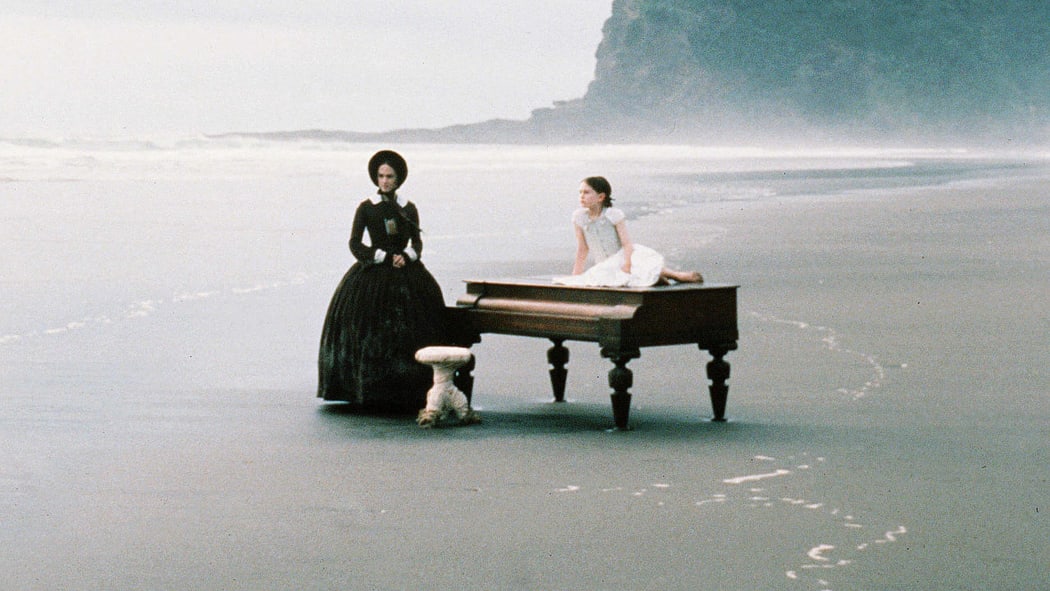
Screen shot from The Piano Photo: IMDB
Can we call the landscape home? It depends on how long we’ve lived here and how happily, and whether the bush and the rivers have become places we’ve learnt to explore safely and enjoy without being afraid of them. Just as the big screen holds up images of people like us to love or hate, so too does it hold up images of the landscape, inviting us to identify with and dare to claim as our own.
Not only the natural world but the roads and buildings of our towns and cities. The associations are built into the images. Roads as invitations to explore, escape, make a pilgrimage. Small towns as parochial, stifling places, cities are exciting and a bit scary.
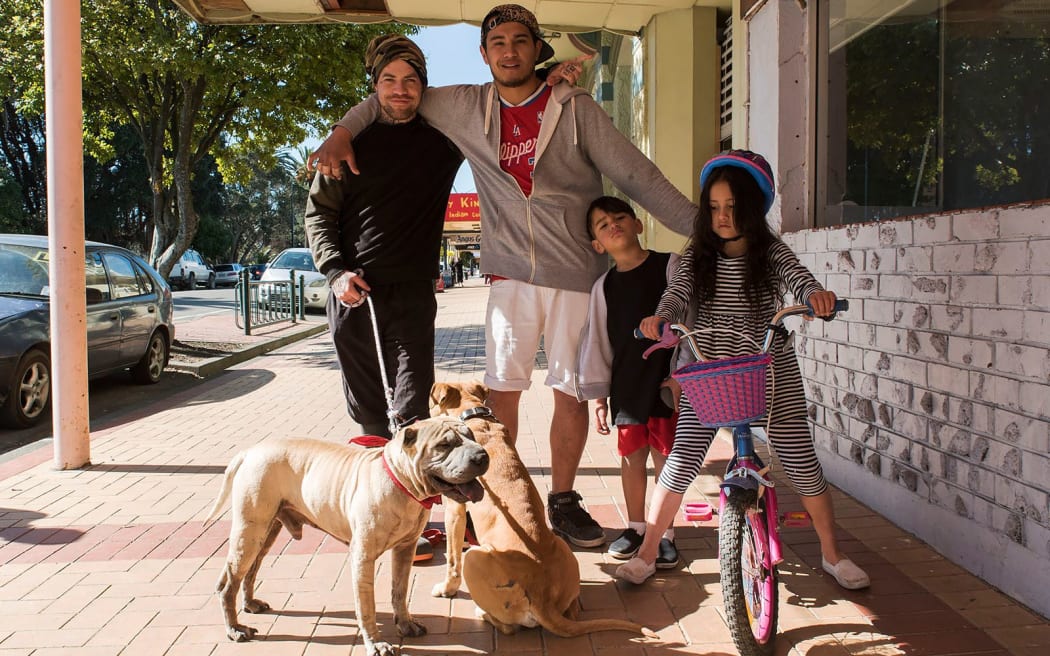
A street scene in Wairoa Photo: The Wireless
Happily, the cinema language of such landscapes is fluid and able to adapt. As provincial New Zealand becomes an ever more desirable and affordable place to live, so might smaller towns become even more appealing as cinema settings. And our gridlocked cities less glamorous.
The medieval Cumbrians who dug their way through the earth into downtown Auckland in Ward’s wonderful film The Navigators weren’t too fussed by what they found here.
And according to Peter Jackson’s Mortal Engines, the cities of the distant future aren’t going to get much better.
Somehow it seems that the countryside has the effect of making people nicer to each other. And the visual power of movies makes that easy to understand.
The next step in presenting and examining landscape in our films will be to listen to what the landscape is saying, not about us and who we are, but about itself and its own health. Most New Zealanders are shocked to learn about the polluted and unswimmable state of our waterways, the plastic wasteland of beaches and coastal waters, the toxicity of our soils, the overload of our sewage systems.
I’ve never seen a Kiwi movie yet that harnesses the visual power of the landscape to talk about the sickness we have imposed on it. A locally produced film, with Māori and Pakeha partnership, telling a story about water quality, would help the current debate no end.
Episode 5. The future
The farming family next door had the first television set in the village. Everyone wanted to be friends with their kids because you’d get invited to watch a programme with them; what you could see of it that is, through the snowstorm quality reception on the small screen.
Nevertheless, it was all very exciting in 1955 but I had no clue then that TV would close movie theatres by the hundreds. New Zealand had 500 cinemas in 1960. By 1980 there were only 154 left and many were rundown. Home video players didn’t help either.
Doom merchants predicted the end of movies as we knew them, but they were soon silenced because in New Zealand as elsewhere cinema soon flourished like never before, helped enormously by the NZ Film Commission which in the last 40 years has helped to fund 650 features and short films. And the TV production industry has grown and found synergy with filmmakers. The figures for 2013 listed 1600 productions.
New Zealand’s screen industry employs around 16,000 people and boasts an annual revenue of $3 billion. And the technology it uses, much of it homegrown, motion-captured, computer-generated imaging and wizardry from WETA workshop, sets standards internationally.
So what is the future for the movies, now that it’s clear TV is not going to sink them?
We’re going to be living with small screens and large ones, ever smaller, ever larger, for some time to come. The cinema experience is likely to be more sophisticated and more expensive, the small screens at home more accessible, easier to stream and download.
And the technology to make all that happen is dazzling. Stephen Spielberg wants to see the viewer freed from the confines of a square screen and put inside a fully 3D experience. American futurist Michio Kaku believes that in a few decades we’ll have screens that provide feelings as well as sounds. There are plans for virtual reality and augmented reality for mass audiences, 4D as a step beyond 3D, screenplays written by Artificial Intelligence, filmed by flat, ultra-thin lenses. The only familiar feature will be the ice cream you buy with the ticket.
But for all that, there is an amazing continuity with the experience of those first moviegoers in the silent film nickelodeons, watching actors jerk their way across the screen and the Imax palaces of today that wrap you around with larger than life images, drowning you in sound effects.
At both ends of this timeline, the audience still has to surrender its disbelief, to hand its sense and senses over to the dream factory and be taken to places they’ve never been before, and to do all that together what’s more, in the company of strangers, sitting in the dark, forming a community that will only last for an hour or so, but be left with memories so vivid they’ll stay with you forever.
What will shape the future of movies even more than all the whiz-bang technology, are the subjects that filmmakers will dare to tackle and the courage and honesty and artistry they bring to the task.
That for me is what will continue to make New Zealand film-making enduring and distinctive. The good news is that there are so many achievements to build on, even in the short half-century of a having a half-way viable industry.
Films that jangle our nerve ends, culturally, spiritually, politically; like Dark Horse, the true story of a fragile chess champion in Gisborne whose inspiration turned his community inside out.
Films that make us laugh out loud and leave us smiling for weeks afterwards, like Pecking Order, not a documentary but a “flockumentary” about the 2015 National Poultry Show in Oamaru.
Films that remind us where we’ve come from as a nation, the history we can celebrate and the history we prefer to forget, like Patu and Chunuk Bair and The Rain of the Children and War Stories Our Mothers Never Told Us, and all the other stories that wait to be told on the big screen about Erebus and Passchendaele and Brunner and Blackball and Pike River.
There are already a host of movies that show off the heroes we love and the villains we can’t ignore. Ed Hillary up and down Aorangi Mt Cook and Everest and the Untouchable Topp Twins and Bert Munroe up and down an Invercargill beach on the World’s Fastest Indian and all our own Ned Kelly figures that Aussies love to remember and Kiwis prefer to forget.
And the philosopher surfcasters on 90 Mile Beach in Land of the Long White Cloud that talk about the meaning of life while they haul in big snapper.
And the movies that tell quirky stories about the families next door: wry, laconic, understated, funny, like Second Hand Wedding. There is a host of them waiting to be told.
And the movies about cultures we call foreign even though they’ve been here for as long as any of us, like the lyrical study of Chinese gold miners in Illustrious Energy.
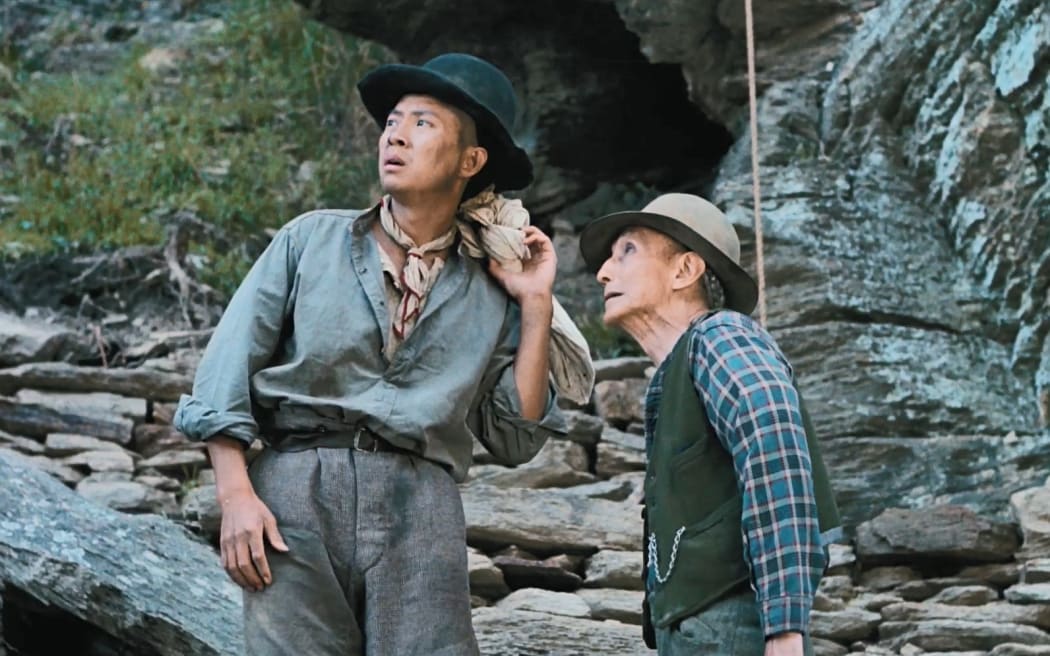
Illustrious Energy screenshot Photo: NZ On Screen
And about the kids and the teenagers whose bravado and awkwardness we recognise because we were like that too, in Two Cars, One Night.
And then there are the grinding, endemic, generational issues of addiction, poverty and abuse that won’t go away, and we can’t see why until we see movies like Waru that unravel them in interwoven stories, layer by layer.
And finally, because this is an embarrassment of riches, the films that simply set us singing about what it means to be a New Zealander, led by Dalvanius Prime from Patea as we learn to sing 'Poi E'.
All of those themes are waiting to be further explored even more deeply, along with all the chapters in our history we hurry past but can’t forget until we own them, and all the stereotypes that divide women and men, Māori and Pakeha, the foreign and the familiar.
There’s much work to be done and as it is, the future of New Zealand film will be embedded ever better in what it means to be a Kiwi.
The movie industry is not going away any time soon. We love the dream factory as much as we ever did. Our hunger for entertainment and distraction from the chaos of the world has never been greater.
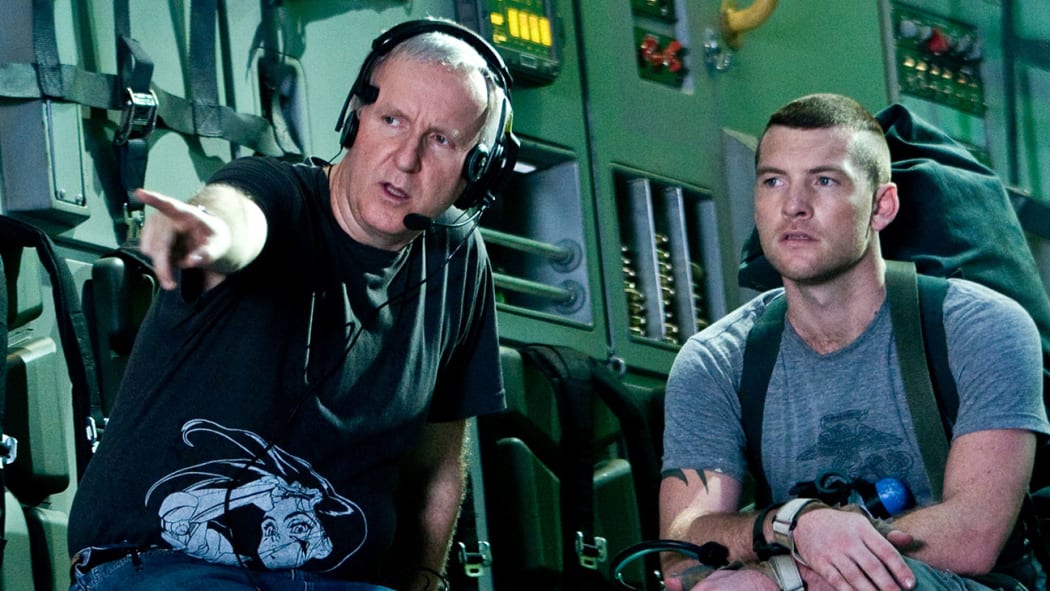
James Cameron directing Avatar star Sam Worthington in 2009 Photo: Twentieth Century-Fox Film Corporation
Director James Cameron, who is making more Avatar adventures in Wellington right now, was asked in 2010 whether he’d still be making movies in 40 years.
“Yes,” he told the reporter, “If I’m still alive. I’ll be 96 so I’ll be making films but very, very slowly.”
I hope we’ll be watching them slowly, too.
Other talks by John Bluck
Click here to find out more about other scripted talks by John Bluck.
About the speaker
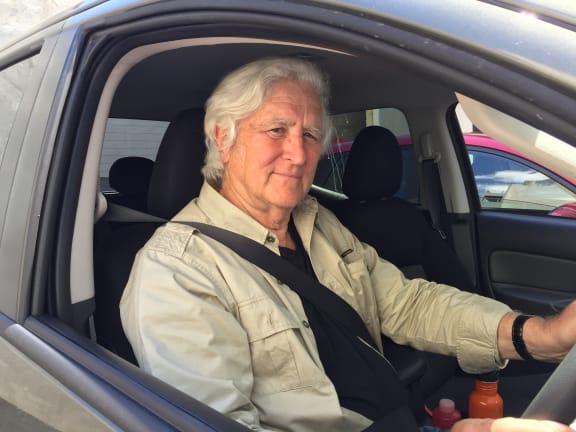
Photo: RNZ / Paul Bushnell
John Bluck
John Bluck was born in Hawkes Bay, educated at Napier Boys’ High School, the University of Canterbury and the Episcopal Theological School in Cambridge Massachusetts. He's had interwoven careers in journalism and ministry for the Anglican Church, spending time as a reporter in Boston, USA.
A former journalism tutor and chaplain at the Wellington Polytechnic, he has edited a number of publications including the World Council of Churches’ "One World" magazine in Geneva.
His ecclesiastical career started in Gisborne and took him to posts as varied as Director of Communications at the World Council of Churches, Professor of Pastoral Theology and Communication at Dunedin's Knox Theological Seminary, and Dean of Christchurch Cathedral. He was the 14th Anglican Bishop of Waiapu.
After resigning his See in 2008, he left moved to a rural setting near Warkworth from which he has continued to write and publish.
